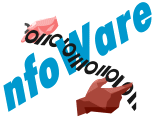
toolNote
t060501
Windows Console Session
Resources

|
toolNote
t060501 |
{placeholder}
- Microsoft (2006).
- Microsoft Windows XP - Command Shell Overview. Windows XP Product Documentation. Available on the web at <http://www.microsoft.com/resources/documentation/windows/xp/all/proddocs/en-us/ntcmds_shelloverview.mspx?mfr=true> (accessed 2006-05-22, cached).
This page provides a technical overview of the Windows Command Shell. The information is suitable for reference by experienced developers and administrators. Consult this material for additional nuances and capabilities after first becoming comfortable with basic Windows console operations. Related pages linked from this one provide important supplemental information. The organization below follows the narrative approach of the nfoWare presentation of Windows console-sessions concepts and usage:
1. Console session initiation and configuration
1.1 cmd.exe command interpreter options (cached)
1.2 Configuring the console window (cached)
2. Command-line processing
2.1 Basic command format
2.2 Using multiple and conditional commands (Overview section)
2.3 Using environment variables (Overview section)
2.4 Using filters (cached), a special case of redirection
2.5 Redirection operator reference (cached)
3. Windows XP Command-Line Reference (cached)
3.1 A-Z command-line reference (cached)
3.2 New command-line tools in XP (cached)- 3.3 XP Differences in MS-DOS command-line tools (cached)
3.4 Additional Windows Support Tools (cached)
4. Automating command-line tasks (cached)
4.1 Using batch files (cached), with the special commands and parameters available
4.2 Using batch parameters (cached)
4.3 Using the command-based script host (CScript.exe) (cached)
- Computer Hope (2006).
- MS-DOS Help and Commands. Available at <http://www.computerhope.com/msdos.htm> (accessed 2006-05-22).
This page and related ones provide a summary of the MS-DOS Console Shell and the nature of the commands available when hosted by MS-DOS. Although this gives an useful alternative presentation, the reader must understand that the although the Windows Command Shell is similar to that of the MS-DOS Console Shell, there are important differences in the availability of commands, their options, and their implementation on the different platforms.
- Wikibooks (2006).
- Guide to Windows Commands. On-line book draft. Available at <http://en.wikibooks.org/wiki/Guide_to_Windows_commands> (accessed 2006-05-28). (cached)
This draft guide is focused specifically on the Windows Command Shell, with some links to historical information. The cataloging of commands (including standard command-line utilities commonly available in conjunction with the shell) also provides comparison with 4NT, an enhanced command shell that can be used as an alternative to the Windows cmd.exe.
- Wikipedia (2006).
- MS-DOS. On-line encyclopedia entry. Available at <http://en.wikipedia.org/wiki/MS-DOS> (accessed 2006-05-22). (cached)
This, like the Computer Hope page, provides historical background (2006). Focus is on MS-DOS as a standalone operating system. Although either MS-DOS itself (through Windows 98 SE) or an MS-DOS emulator (for Windows 2000 and later releases) is present in Microsoft Windows configurations, there are many differences between the Windows Command Shell and Windows console applications and the MS-DOS Command Shell and MS-DOS applications.
- Bott, Ed., Siechert, Carl (2001).
- Microsoft Windows XP Inside Out. Microsoft Press (Redmond, WA: 2001). ISBN 0-7356-1382-6 pbk + CD-ROM.
This compendium of practical information is valuable with regard to all aspects of Windows XP usage. {author note: I have ordered the second, XP SP2 edition and will cite it when it arrives.} Appendix A, Working with the Command Prompt, provides useful lore for and useful sidebar tips on operating in console sessions:
Starting and Ending a Command Prompt Session
Using Commands
Using Environment Variables
Customizing Command Prompt Windows- Stanek, William R. (2004)
- Microsoft Windows Command-Line Administrator's Pocket Consultant. Microsoft Press (Redmond, WA: 2004). ISBN 0-7356-2038-5 pbk.
Part I of the book covers Windows command-line fundamentals in four chapters. The remaining sections are devoted to administrative functions and their command-line tools. The treatment of command-line fundamentals is comprehensive, with careful treatment of many fine points.
Content:
Part I: Windows Command Line Fundamentals
1. Overview of the Windows Command Line
2. Getting the Most from the Command Line
3. Command Line Scripting Essentials
4. Scheduling Tasks to Run Automatically
Part II: Windows System Administration
Part III: Windows File System and Disk Administration
Part IV: Windows Active Directory and Network Administration
Appendix: Essential Command-Line Tools Reference
{references}
{contributors}
{attribution}
 |
created 2006-05-20-13:57 -0700 (pdt) by
orcmid |